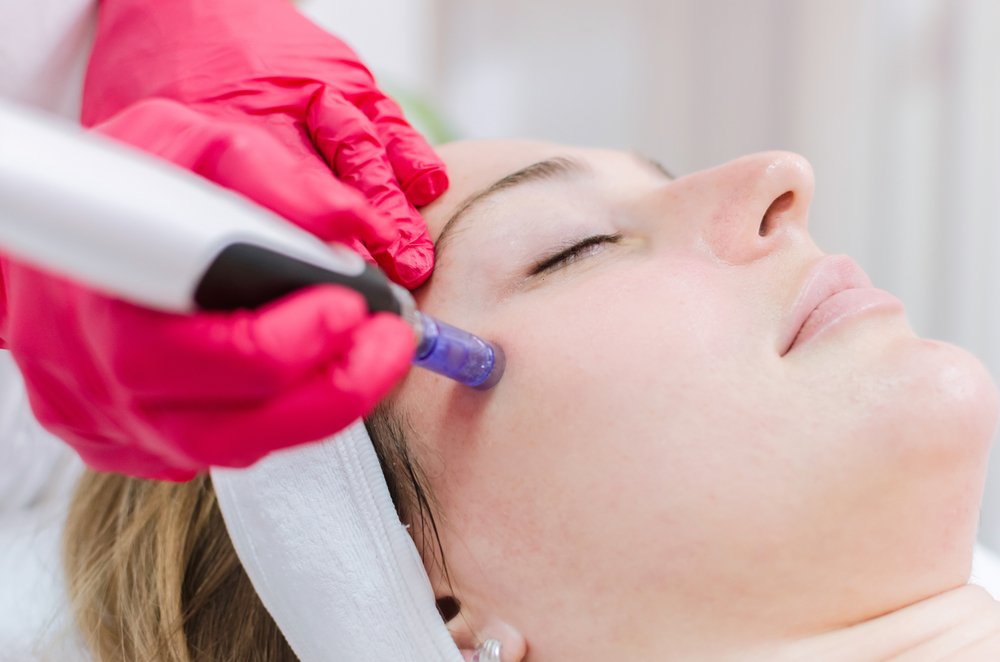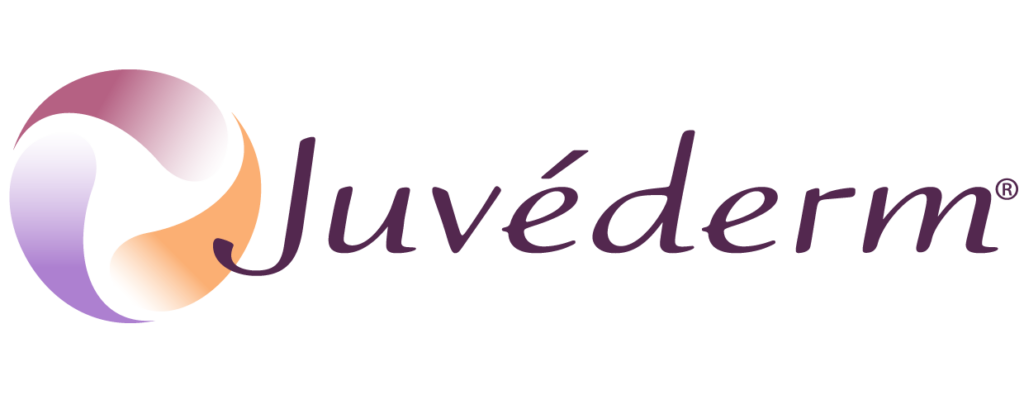
Microneedling
Microneedling (also known as skin needling or collagen induction therapy) is a type of treatment that uses small needles to cause controlled tiny injuries into the skin (dermis layer). These small contact points stimulate fibroblast to create a wound healing response and renew the skin cells. As your skin repairs, the production of collagen and elastin is triggered to give an almost immediate plumping effect. It also leads to reduction in wrinkle depth, and the appearance of the scars and other skin imperfections, leaving the skin smoother, cleaner, firmer and younger looking.
The clinical practitioner will use a device called microneedling Pen. This is a unique electronic mechanism which allows your practitioner to control treatment intensity to best suit your needs. A solution is also applied to the skin, containing hyaluronic acid, minerals, vitamins and peptides, which stimulates cell proliferation and so reduces the skin’s contours and improves elasticity. The microneedling pen treatment is targeted and ideal for clients who have localised areas of concern.
Microneedling is most often used on your face to target:
• fine lines and wrinkles
• large pores
• acne scars
• other types of scars
• age spots (also called “sun spots”)
• reduced skin elasticity
• uneven skin tone
Microneedling is a great treatment for you if you have darker skin because it doesn’t involve peels or lasers, which can cause pigmentation issues.
Microneedling is most commonly used to treat the following skin conditions:
- Dull skin: Rejuvenate tired and dull skin and combat the initial signs of ageing.
- Wrinkles: Fine lines and wrinkles on the face can be visibly reduced, as microneedling triggers collagen production.
- Scarring: Scars from acne and Chicken Pox can be improved and an uneven texture can be smoothed out with microneedling.
- Pigmentation: Can help to fade dark patches such as pigmentation due to sun damage or ageing.
Assessment
It is required before your first treatment
Duration
40-60 minutes
Discomfort
minimal
Downtime
2 – 3 days
Treatments No.
usually 3 – 4
Longevity
4 – 6 months
Microneedling FAQ
Skin needling procedures are performed by a professionally trained medical practitioner with the use of the sterile microneedling pen. The procedure is normally completed within 30-45 minutes depending on the required treatment and anatomical site. Before the procedure commences a topical anaesthetic cream can be applied to the client’s skin to ensure their comfort and a painless experience. After the skin is numbed, the practitioner gently presses microneedling pen over the client’s skin to puncture the outermost layers of the skin and create tiny sub-cutaneous injuries. These microscopic wounds stimulate new collagen deposition which may last for up to a year, yet they close within less than an hour causing no bruising or injury.
After the procedure, the client’s skin will be red and flushed in appearance in a similar way to moderate sunburn. The client will also experience skin tightness and mild sensitivity to touch on the area being treated. This will diminish greatly after a few hours following treatments and within the next 24 hours, the skin will be completely healed. After 3 days there is barely any evidence that the procedure has taken place.
Visible results of skin rejuvenation are seen after just 6-8 weeks following procedure and continue over the following months for up to a year. A course of 3-4 skin needling sessions, at 4 – 6 week intervals, is usually recommended to achieve optimum results; however great skin improvement is noticeable after just one treatment.
Skin needling does not involve injections and therefore allergic reactions and side-effects are unlikely. It is minimally invasive, involves minimal downtime (max. 24hrs), rapid healing and requires simple after-care. Clinical skin needling is minimally invasive and normally no blood is drawn, however, small amounts of pinpoint bleeding in clients with thin skin may occur and should be considered as normal.
Skin needling can be safely performed on all skin colours and types. There is no risk of post-inflammatory hyperpigmentation as the melanocytes remain intact, like the epidermis, during skin needling. Other invasive procedures such as laser resurfacing are not recommended for Asian skin due to the potential risks of delayed wound healing, pigmentary changes and scarring. This is where skin needling has an advantage as these potential risks are very unlikely due to the epidermis remaining intact. Use of skin needling is viewed as a suitable procedure as it does not affect the heightened wound healing response in Asian skin. This natural reaction is not induced by skin needling as it does not disrupt the melanocytes, the cells that produce melanin which is a pigment responsible for skin colour.
The home use 0.3mm and 0.5mm models are specifically designed to penetrate deep enough to be very effective, and yet not deep enough to touch nerves and cause appreciable pain. When used according to the directions, the ultra-sharp titanium needles will penetrate the upper layers of skin without causing bleeding or permanent injury. Longer needles (1.0mm, 1.5mm, 2.0mm and 3.0mmm) can cause pain but also produce significantly better results. Therefore they can only be used by experts and have to be accompanied by a topical anesthetic will be applied to numb the skin making the procedure comfortable. Normally this is a 4% Lidocaine or other anesthetic creams applied 30 minutes before the procedure takes place.
Skin needling will induce collagen synthesis on its own (dry skin needling), but skin improvements are significantly enhanced by combining skin needling treatments with the topical application of vitamin A prior, during, and post-treatment. Vitamin C is an essential co-factor to be used alongside vitamin A. Both vitamin A and C work synergistically to induce collagen synthesis and help regenerate the skin. Because treatment with the microneedling pen can also enhance the skin’s absorption of the active ingredients from topical serums and creams.
Microneedling is especially effective for aging concerns such as wrinkles, lines, folds, and crow’s feet. Because collagen is produced, scars can also improve from treatments especially indented acne scars or chickenpox scars. Pigmentation issues can be helped including hyperpigmentation. General lack of skin radiance, skin firmness, and compactness are also an indication for skin needling treatments and visible improvements can be seen.
Relative contraindications include; keloid or raised scarring; history of eczema, psoriasis, and other chronic conditions; history of actinic (solar) keratosis; history of Herpes Simplex infections; history of diabetes; the presence of raised moles, warts, or any raised lesions on the targeted area.
Absolute contraindications include; scleroderma, collagen vascular diseases or cardiac abnormalities; Rosacea and blood clotting problems; active bacterial or fungal infection; immunosuppression; scars less than 6 months old.
Side effects experienced with skin needling are very minimal and usually subside within 24 hours. They include redness, stinging, itching, tightness, and slight peeling.







